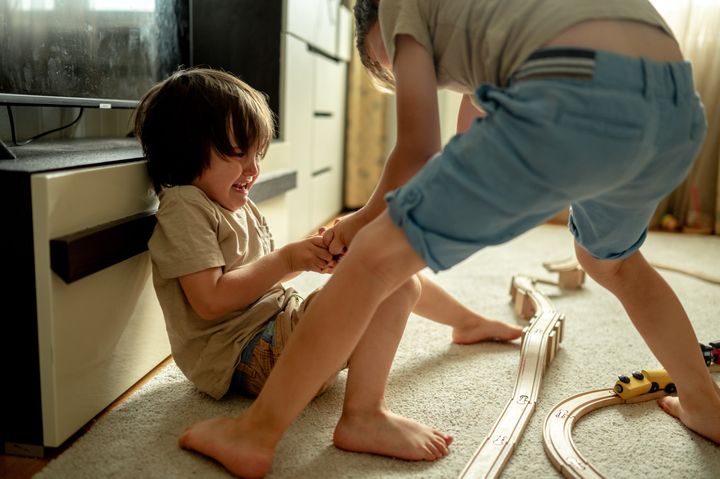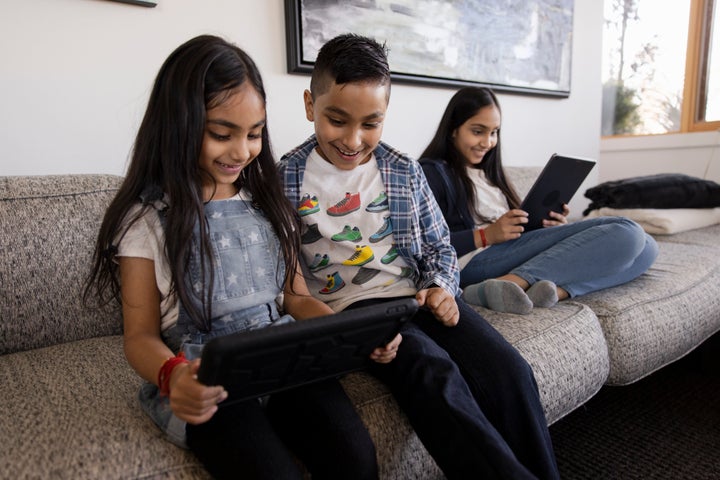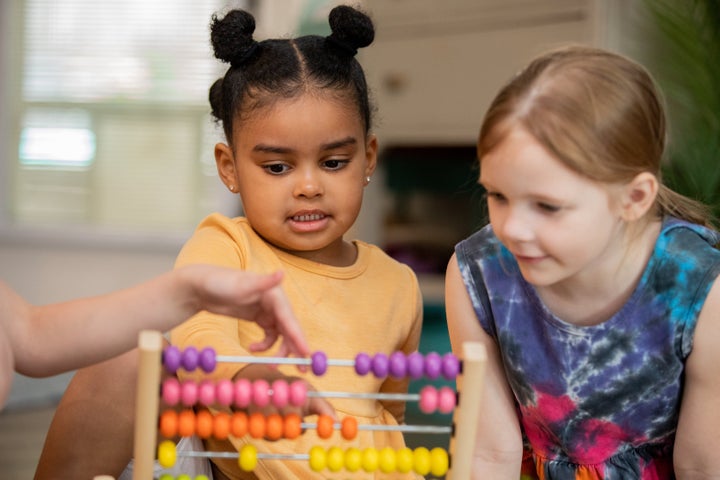
Toddlers and young children have a reputation for refusing to share. “No!” and “Mine!” are generally among their earliest utterances, and often their most frequent.
While it’s true that most kids need time and practice learning to share, parents’ expectations regarding sharing are frequently out of sync with what’s reasonable to expect of kids developmentally.
In a survey of parents of young children by the organisation Zero to Three, 43% of parents reported a belief that kids can share and take turns before the age of two ― 71% said they think children are capable of these behaviours by the time they turn three.
But the truth is that children don’t develop the ability to share until ages three or four, and their capacity for understanding other people’s perspectives is under construction up until age seven.
In other words, sharing doesn’t come naturally to young children, and parents should expect that a child will sometimes resist. But while young children will need some help understanding and practicing the concept of sharing, they are capable of recognising others’ emotions and feeling empathy.
We asked educators and child development experts about what parents can do to support their kids as they learn this crucial skill.
Adjust your expectations to your child’s developmental stage
You may have heard someone say that young children are egocentric. This doesn’t mean that they are self-aggrandising and focused on their own benefit, as is implied when someone says the same of an adult.
Emily Kim, PhD, a researcher at the University of Toronto, says that a child’s egocentrism means “they have difficulty taking other people’s perspectives”.
This includes, “thinking that others experience the world in the same way they do,” according to Jeannette Corey, director of the Bank Street Family Center in New York.
Their behaviour is often selfish because their own perspective is the only one they have. The knowledge that others have thoughts and feelings different from their own, which psychologists call “theory of mind”, doesn’t fully develop until ages five to six.
However, Kim cautions that kids don’t simply wake up on their fifth birthday free from egocentrism. “This doesn’t work like a light switch,” she says. In fact, they’re capable of understanding others’ feelings even before then — and they’ll probably sometimes need a reminder to consider others’ feelings even after they turn seven.
One 2015 study, for example, showed that children as young as three and four were able to understand how a person might feel if they were shared with or not, and that they behaved more generously when they understood the negative consequences of not sharing.
But while kids this young are capable of empathy, they’ll need help getting there sometimes, and that may include plenty of practice.

Teach your child to consider others’ feelings
“Drawing children’s attention to other people’s feelings and perspectives is really the beginning of the process of understanding sharing,” says Corey.
While they may not fully develop theory of mind until age seven, there are many ways to help children see other people’s perspectives. “We can do this by talking about how other people might feel,” Corey continues.
For example, a parent or teacher might say something like, “it looks like Jenny is feeling sad. She really wants to play with that doll. Take a look at her face. She is crying.”
A child can make the connection that Jenny feels sad because she wants to play with the doll, even if they didn’t have the foresight to understand that another child would want to grab the same toy they were heading towards.
Provide opportunities for practice
Preschool teachers create ample opportunities for children to practice sharing and taking turns.
Schools and childcare settings often provide multiple copies of a preferred item. “This allows children to play with the same material side-by-side and see how other people can enjoy a material,” Corey says. When they can understand that something brings another child enjoyment in this way, “they might be more willing to turn a material over to a child when they feel done with it.”
Kids often find it easier to share with their peers in a structured classroom setting, but there are plenty of ways to help kids practice sharing at home as well.
You can play games with your children to practice sharing and taking turns. Kristen Miller, director of education for the Celebree School, says you can “help your child through the steps by saying things like: “Now it’s my turn to play with the blocks, and if you share with me, I’ll share with you.”
You can also note other instances of sharing between parents or siblings. “If a toddler is on the receiving end of sharing, they will be likely to reciprocate or imitate the behaviour,” says Miller.
In the case of playdates at your home, you can help your child adjust their mindset beforehand by saying something like, “When your friend comes over, you’ll need to share some of your toys. Maybe ask them what they’d like to play with,” Miller suggests.
Remember to connect the idea of sharing back to other people’s feelings, as in, “I think Sam will have fun using your new doll stroller.”

Don’t force a child to share
While the goal is for your child to initiate sharing and turn-taking without your intervention, they may need assistance from an adult or older sibling sometimes to come up with a solution, such as using a timer to ensure that two children get 10 minutes each on the tricycle.
It may be tempting when your child refuses to negotiate to snatch an item from their hands and give it to someone else — but this will only provide a solution in the moment, and may even lead to more reluctance to share in the long run.
“The goal is for children to begin to understand that other children have a desire for a toy or material, and that they would want to allow a child to experience it,” says Corey. “We are looking for children to begin to show understanding and empathy,” which “doesn’t come with children being forced to do something.”
Learning this skill is a process. “It’s perfectly normal for your child to fail to share,” says Kim. “If your child doesn’t behave in the way you expect them to, take the time to explain what they should or should not do and why.”
This way, even if they refuse to share an item in the moment, you help them develop the habit of considering others’ feelings.
“The goal is for children to begin to understand that other children have a desire for a toy or material, and that they would want to allow a child to experience it.”
- Jeannette Corey, director of the Bank Street Family Center in New York.
Use positive reinforcement
When your child does share — whether with you, a sibling or a peer — take a moment to mention the achievement. And don’t forget to note the other person’s feelings, for example: “Ben is smiling. He’s really happy with his half of the cookie.”
Model the behaviour you want your child to emulate
In addition to modelling sharing at home with snacks and toys, you can help children see that there are others less fortunate than them — and ways that they can help.
“When adults in children’s lives talk to them about other people’s needs and show care for those people, children will begin to understand that there might be people who have experiences that are different from their own,” says Corey.
For example, if you’re making a donation to a food bank, you could explain that some people don’t have enough food, so you’re buying some to share with them.
“It is important to use language that feels reassuring to them and to be concrete in how they can help,” Corey adds.